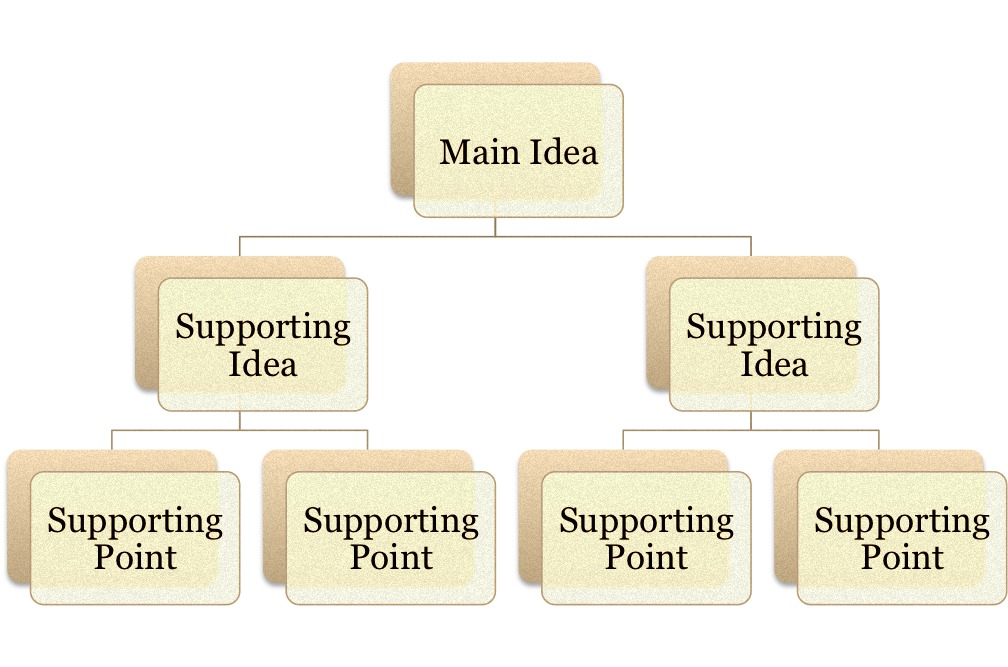I like to think about content as an architectural piece that needs a sturdy foundation and strong interconnecting parts to hold it together. While creativity in your writing should be free flowing, it all starts with planning. Think about it: No major construction ever begins without first referencing the architectural plans that map out the end results.
If you’ve ever felt lost staring at the blank screen before you and wondering what your first words are going to be, you’re not alone. That’s why I’m going to share with you a simple two-part process that helps wrangle your ideas into something tangible you can write about.
These content outline tips can help anyone – even if you believe you aren’t a writer – and will allow you to remain as creative as you’d like, but in a way that lets your end product feel finished and professional. Ready to get started?
1. Build the Foundation
The first step of your content outline should be easy. Start by documenting what you believe the article, blog post or whatever type of content you are creating is about. Don’t worry about crafting a clever title yet, just try to sum up the point of your idea in one or two sentences. They don’t even have to be coherent to anyone else but you.
Here, you are answering the “What is this?” question. This is your thesis (and don’t let that word intimidate you, it’s simply a summary of the main idea). A thesis is more specific than just a topic, though. For example, you’re not just going to write about puppies. You’re going to write about how to teach puppies to learn basic commands.
Writing your main idea can be as simple as starting with the following words:
“The point of this [blog post, article, ebook, etc.] is to show …”
Next, answer the “Why am I writing this?” question. Explaining the reason why the content needs to be created usually lends itself to the problem you’re trying to answer.
Again, you can finish some form of the following sentence:
“The reason this topic is important is because …”
One last path you can explore for your content outline can help you drive your points home when writing your content. This is answering the “Who is reading this?” question. Knowing who helps you build a case using specific examples that are relevant to that person.
So finish the following prompt:
“This piece is meant for …”
You now have the main point of your content, the reason why you’re tackling the subject and who it’s meant for. You may even choose to keep those sentences handy as you write so you can reference them throughout the creation process.
2. Create the Structure
Now it’s time to plan how you will build your case to support that main idea. First, list out all the important points you want to cover to support your main idea. Don’t think about them too hard, just put them down and you can weed them out later.
Next, look at your list and start grouping like-ideas together. This is going to help you define sections within your content. For example, your brainstorm list could look something like this:
- Teaching puppies how to sit.
- Reinforcement treats.
- Teaching puppies how to lie down.
- Good behavior for veterinarian visits.
- Teaching puppies how to stay.
- Good behavior at the dog park.
- How to deal with nervous puppies.
Let’s say that for your article, you’ve identified three main supporting ideas you want to tackle:
- Teaching puppies how to sit.
- Teaching puppies how to stay.
- Teaching puppies how to lie down.

Now you have the three sections of your article and a more solid content outline. These are the three ideas you are going to explore to help support the main idea of your article. What comes next is defining the points that will be touched on in each section.
For section No. 1: “Teaching Puppies How to Sit, ” you would then list out all your points. You might decide that the point from your brainstormed list earlier “good behavior for dogs at the vet” applies to this section, so you’d assign it and add any others that you want to expand upon.
That might look something like this:
Teaching Puppies How to Sit
- The importance of this command for vet visits specifically.
- The best reinforcements aren’t necessarily treats.
- How to teach the puppy this command.
Finally, when you’re building out the content, save the intro, closing paragraph and title for last. That way, you’ll be able to summarize what the piece is about easily. All three of those final pieces are about summarizing, just in different forms.
The intro summarizes what people can expect from the piece, and does so in a way that makes them want to continue reading. The closing paragraphs wraps it up in a bow, helping your readers feel like they reached an end of a story. And the title is the most concise summary of them all, and you can draw upon your thesis for ideas for that.
The End Product: Content by Design
Now that we’ve gone through how to structure your content outline, are you beginning to recognize a pattern? Just like a building, each section cannot exist without supporting another section. This is why I look at content as a structure. If you’re ever feeling stuck, try to visualize your content’s structure, and then fill in the blanks:
When you approach your content with a plan, it gives order to your creativity. And although that may sound counterproductive, it actually gives enough direction to wrangle those creative thoughts into something cohesive and worthy of publishing.
I hope these content outline tips help you in your next writing assignment!


Hi Jessica–
This is helpful. I’m trying to develop new content and will try out the three questions you suggest as a way to clarify my thinking before writing.
One of your questions was “This piece is meant for….” which is to be filled in with some description of someone visiting my site for content. A few weeks ago you wrote about developing personas to represent the visitors to a site (http://www.bizbuzzcontent.com/agile-marketing-personas/). It seems like an interesting possibility to combine these two ideas and fill in “This piece is meant for….” with one of the personas previously developed. That would be a good way to make sure a site has the right amount of content aimed at each persona.
Thanks for the ideas on organizing my thoughts before I start a new piece.
Thanks for your comment, Mike. Appreciate you being a loyal reader! You are so right. In fact, I’m going to update that part of the post with a link. Glad this was helpful.
-Jessica